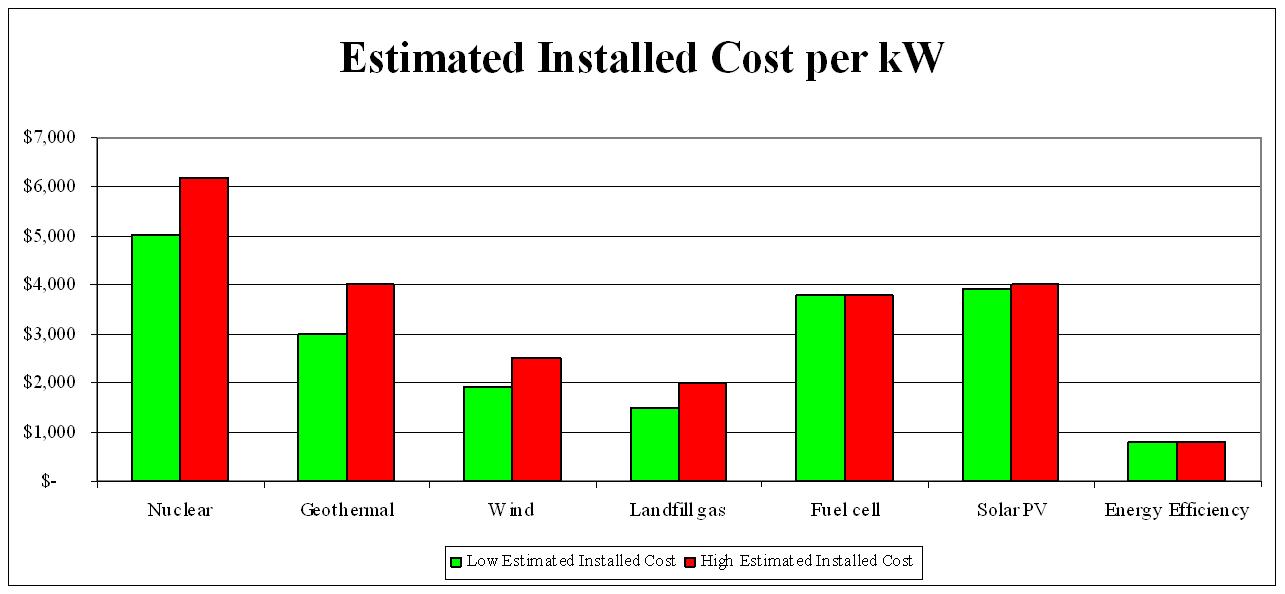With states scrambling to align their own rules with U.S. EPA‘s new regulations, which are set to take effect on Jan. 2, 2011 and require regulators to start issuing Clean Air Act permits next year for large stationary sources of greenhouse gas emissions, Texas is now the lone holdout, according to an analysis by the National Association of Clean Air Agencies (NACAA). Click here to see a copy of the analysis. (more…)
Posts Tagged ‘fort worth star telegram’
Texas last holdout on issuing greenhouse gas permits
Posted in Air Quality, Coal, Energy, Global Warming, natural gas, Renewables, TCEQ, tagged clean air act, EPA, flex permits, fort worth star telegram, George W. Bush, greenhouse gas, greenhouse gases, Major stationary source, TCEQ, Texas, Texas Commission on Environmental Quality, United States Environmental Protection Agency on October 29, 2010 |
Hot Texas Summer Leads to Record Energy Consumption
Posted in Energy, Global Warming, tagged baseload, Coal, Consumers, electric reliability council of texas, energy use, ercot, fort worth star telegram, generation capacity, grid, june, Nuclear, outages, peak energy, power grid, record electricity consumption, reuters, solar, summer, Texas on June 24, 2009 |
 Just four days into summer, and we’re already are setting records for energy consumption in Texas. Yesterday Reuters reported that the Texas grid had set a new record for peak energy consumption in the month of June. With temperatures already in the 100s in our largest urban ares, thermostats are cranking across the state, and energy bills are going up.
Just four days into summer, and we’re already are setting records for energy consumption in Texas. Yesterday Reuters reported that the Texas grid had set a new record for peak energy consumption in the month of June. With temperatures already in the 100s in our largest urban ares, thermostats are cranking across the state, and energy bills are going up.
Texas consumers used 60, 452 MW of energy in the hour ending at 5 o’clock yesterday, blowing last year’s June record of 59,642 MW out of the water.
But today ERCOT is predicting that Texas will set a new record for electricity consumption. Period. By about five o’clock this afternoon, the time of day when the the sun is shining brightest and A/Cs run hardest, Texas will be consuming more energy at one time than we ever have in our history.
According to the Ft. Worth Star Telegram,
The Electric Reliability Council of Texas, which oversees the power grid that serves about 22 million Texans, forecasts that power demand will peak today at 62,450 megawatts and at 63,589 megawatts Thursday. The record is 62,339 megawatts, set Aug. 17, 2006, ERCOT spokeswoman Dottie Roark said.
If we’re reaching record energy use this early in June, I don’t even want to think about how bad its going to get in July and the dreaded August. Global warming, indeed. Don’t say we didn’t tell you so.
But no need to worry about outages, ERCOT says. The grid has more than 72,700 megawatts of available generation capacity, plenty to serve on even the hottest days.
So wait a minute. If we have 10,000 MW of extra power lying around, why is Texas rushing to build 12 new coal plants to provide tons of baseload power? Judging by this recent run of records, looks like what we really need is *peak power.
Not sure of the difference? An aside for the uninitiated. There are two main classifications of power that run our modern lives: baseload, and peak. Baseload is steady amount of power we need under normal circumstances (because as a society we’re always doing something that requires energy), and peak is the extra energy we need when we are all doing something at the same time. Think about baseload and peak power as you would about keeping your body hydrated. We always need to be drinking a certain amount of water to stay healthy and functioning (baseload aqua), but when we are working out or being active outside, need even more on top of that (peak gatorade).
Baseload power is largely provided by the old dirty standbys — coal and nuclear (unless you’re in Houston, in which case it is gas in abundance, baby — one of the reasons power in H-town is so expensive). Baseload is the huge, slow, steady sort of power — the kind we have plenty of.
In Texas, peak power is generally produced by gas turbines. When it starts to reach that key hot afternoon time, your energy provider flips the switch to turn on a quick revving gas turbine to turbo charge the grid with enough power to keep all those fans spinning and air conditioners blowing.
Another source of peak power, though less common currently, is of course solar power. Solar produces peak power because just as the day gets hottest, and we need power to keep us cool the most — the sun is shining brightest! Match made in heaven, really — solar and the need for peak energy.
So why is Texas trying to build 8500 MW + 9149#of coal MW of additional baseload power from coal and nuclear plants when what we really need is peak power, and solar is such a natural fit to produce peak energy?
Good question.
Proposed Nuclear Projects in Texas Could Cost $22 Billion
Posted in Energy, Nuclear, tagged bay city, clarence johnson, comanche peak, costs of current and planned nuclear plants in texas, CPS Energy, fort worth, fort worth star telegram, Glen Rose, mayor hardberger, mission verde, Nuclear Power, Nuclear Power Plants, nukes, San Antonio, san antonio express news, South Texas Project, Texas, tommy adkisson, true cost of nukes on April 30, 2009 |
Impressive nuclear headlines in the papers these days, largely as a result of a new report released by our office entitled: “Costs of Current and Planned Nuclear Power Plants in Texas: A Consumer Perspective. The report finds that the proposed expansions of nuclear power plants in Bay City (South Texas Project) and Glen Rose (Comanche Peak) could cost $22 billion, boost the cost of electricity for consumers and curtail investment in energy-efficiency programs and solar power.
The headline in the San Antonio Express News yesterday morning, just below the banner no less, read: Nuke Plan May Cost $22 Billion
This morning the Fort Worth Star Telegram also ran an article titled Anti-nuclear group: Comanche Peak expansion could cost $27.6 billion
The San Antonio Current’s Queblog also reports: Projected nuke power’s price tag inflating.
In addition to a real cost estimate for nuclear power plant expansions in Texas, the report also compares the cost of nuclear power to the cost of alternatives such as wind, solar, and energy efficiency. I’d encourage anyone who complains about the expense of renewable energy but claims that nuclear power is “cheap” to take a gander at the following graph:

Wow. Even on the low estimate end, energy efficiency costs just a fifth of what we would spend to get that kind of power from a nuclear plant, and wind and solar both come in well under that cost of nukes. Take that, naysayers!
A major concern brought up in this report is that the massive capitol outlays for nuclear power options may drain available financial resources for making advancements in deploying more cost effective alternative resources. In San Antonio, this could mean that CPS Energy chooses to partner with the South Texas Project Nuclear Expansion at the expense of Mission Verde, Mayor Phil Hardberger’s aggressive plan to green the city’s infrastructure, businesses, energy sources and technology.
“This new report indicates that we’re going to have to decide now which energy future we want for San Antonio,” said Bexar County Commissioner Tommy Adkisson. “If CPS becomes a partner in the South Texas Project expansion, we are simply not going to have the financial resources to front Mission Verde. We can either choose the most expensive option possible and send our jobs to Bay City and overseas contractors, or pay a fraction of the cost to create thousands of jobs here at home and power the city with clean, green energy.”
For more information on how consumers could get stuck with the check if the nuclear plant goes over-budget or can’t meet its construction schedule (as they are notoriously wont to do), check out our press release.
The San Antonio Current’s Queblog reports,
Prior to deregulation in 2001, ratepayers were drained of $5 billion in capital costs for the nukes in North Texas and Bay City, according to Johnson’s “Costs of Current and Planned Nuclear Power Plants in Texas.”
Also, much of the overruns associated with Comanche Peak and STP have been borne by electric consumers in Texas’ deregulated market since, who “continue to pay off at least $3.4 billion for nuclear assets through transition charges, as well as $45 million in annual payments for nuclear decommissioning,” Johnson writes.
Additional associated STP costs have also been passed along by AEP and CenterPoint to their customers.
Those interested in the report may also download either the full report or a short fact-sheet detailing the report’s major findings.
Along these same lines, turns out today is the Nuclear Information and Resource Service (NIRS)’s national call-in day to end coal and nuclear subsidies. (more…)


